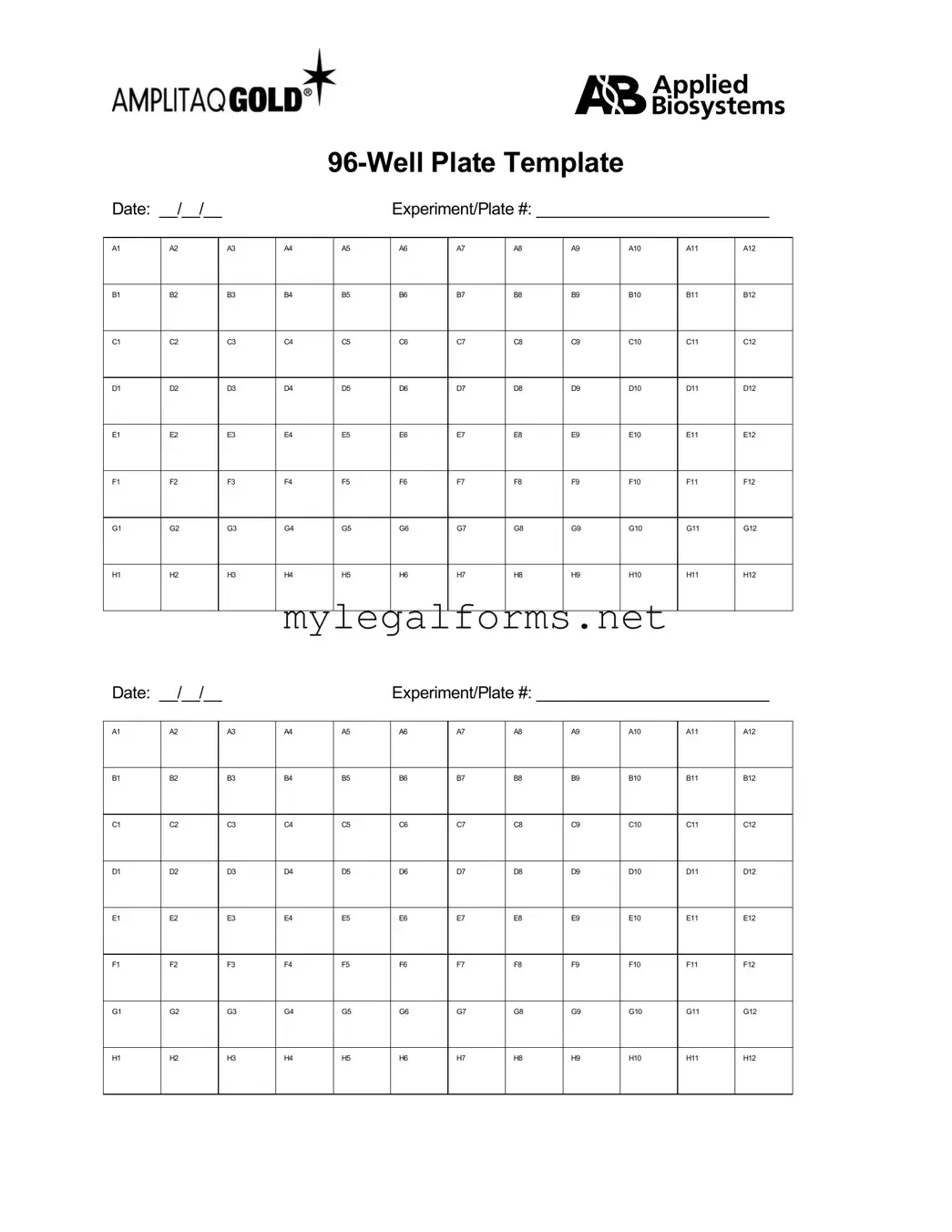The 96 Well form is an essential tool widely used in laboratories for various applications, including sample storage, analysis, and experimentation. This form is designed to hold 96 individual wells, each capable of containing small volumes of liquids, making it ideal for high-throughput screening and assays. Users appreciate its versatility; it accommodates a range of substances, from biological samples to chemical reagents. The layout is typically arranged in an 8 by 12 grid, which simplifies the organization and tracking of samples. Additionally, the materials used in the construction of the 96 Well form often ensure compatibility with different laboratory instruments, enhancing its utility across various scientific disciplines. Researchers and technicians benefit from the clear labeling options available, which help in identifying samples quickly and accurately. Overall, the 96 Well form is a cornerstone in modern laboratory practices, streamlining workflows and improving efficiency in experimental setups.

